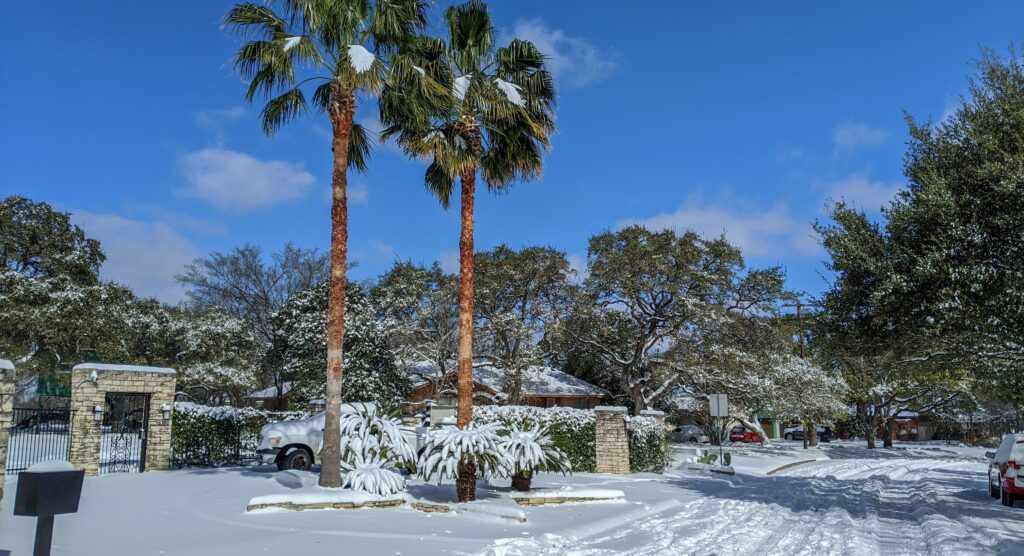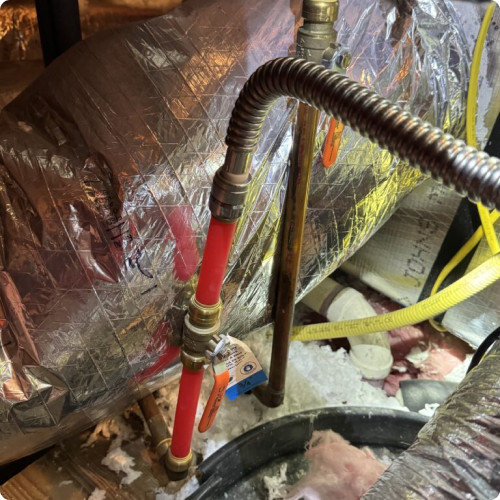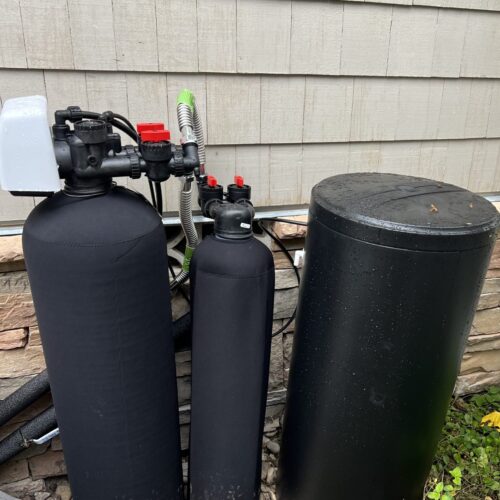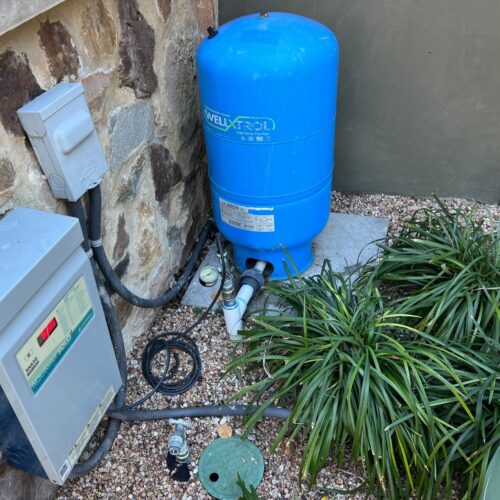15 Ways to Protect Your Home From a Freeze - UPDATED 2/2024

Winter is coming ...
Austin winter is upon us, and for homeowners, that means taking proactive steps to protect your property from the potential hazards of freezing temperatures. Freezing weather can wreak havoc on your home’s water systems, both inside and out. To help you prepare for the cold, we’ve compiled a list of essential tasks to tackle before the freeze arrives. By following these steps, you can safeguard your home from costly damage and ensure a more comfortable winter.
Bear in mind that the unique characteristics of each home, the varying degrees of freeze severity, and the complex nature of winter weather make it important to acknowledge that this list may not comprehensively cover all the necessary steps to prepare your home for a freeze. Your individual circumstances and local climate may require additional precautions and tailored measures to ensure the protection and functionality of your home during cold weather.
How to protect your home from a freeze.
Water Shut-off:

1. Identify the main water shut-off valve
Locating the main water shut-off valve is crucial because it serves as your first line of defense against potential water damage during a freeze, especially in the event of a power outage. Ensure you find it before inclement weather strikes, as trying to locate it when covered in snow or mud during a storm can be challenging. Being able to quickly locate and turn off your home's water in the event of a pipe burst is key to mitigating damage.

2. Differentiate between a homeowner shut-off or city shut-off
City shut-off valves are owned by the city, and technically, only city personnel can operate them. Furthermore, they require a special tool for shutdown.
3. Differentiate between irrigation and homeowner shut-off valves
In many cases, you may encounter multiple shut-off valves on your property. It’s essential to be able to distinguish between those connected to the irrigation system and the main home shut-off valve.
4. Homeowner shut-off valve
If you haven’t already installed one, consider adding a homeowner shut-off valve for easy access in case of an emergency.
5. Clean and maintain your shut-off valve(s)
Valves’ access ports can become clogged and difficult to operate over time. sure to perform routine cleaning and maintenance on the valve box while also adding gravel.
How to Protect Your Home During a Freeze
In this guide, we’ll walk you through different levels of protection
HomePoint Freeze Audit: Included for Every HomePoint Subscriber
All HomePoint members receive freeze audits as part of their subscription.
External Protection:

6. Tankless water heaters
Insulate the water lines leading to your tankless water heater. While these heaters are equipped with anti-freeze mechanisms, the pipes leading to them are vulnerable. To enhance their durability, use UV-protected insulation like K-Flex. If you are leaving your home or if you lose power, remember to power down the unit(s) before draining. Failing to power down the unit before draining can result in the unit burning out.

7. Protect condensation lines
For newer, highly efficient heaters, such as air handlers and heat pumps, it’s important to ensure that the condensation lines don’t freeze. Freezing can lead to clogs and render your heater inoperable. Use UV-protected insulation like K-Flex for added durability.

8. Hose bibs and pool autofills
Exterior hose bibs need protection from freezing as they are the most common point of failure during a freeze. You can safeguard them by either installing covers or using “Freeze Misers”. These devices are designed to work automatically. Simply set them up and forget about them. They will only drip when the water temperature drops below 37°F.

9. RPZs and backflow preventers
Wrap the RPZ assembly and surrounding pipes with appropriate insulation materials. You can use foam pipe insulation or special insulating blankets designed for backflow preventers. Make sure the insulation covers the entire assembly and pipes, leaving no gaps. Consider using heat tape or heat cables on the RPZ assembly and connected pipes. These devices provide controlled heat to prevent freezing.

10. Trim trees over roofs
As we learned with last year’s freeze, trees and their branches have a high potential for falling during a Texas freeze. To mitigate any roof, siding, or overall home damage we highly recommend that you have the trees over your roof trimmed.
Get started sooner than later.
Dealing with freeze-related tasks can be time-consuming, especially when it comes to tree trimming in Austin, which often necessitates permits.
Interior Preparations:

11. Check attic pipes
Inspect and insulate any exposed pipes in the attic. Pipes located above the insulation layer are particularly at risk.

12. Exterior wall plumbing
Plumbing situated on exterior walls is susceptible to freezing. Ensure you insulate these pipes or take appropriate measures to prevent them from freezing, such as opening cabinet doors to allow warm air inside.

13. Appliances that have internal pumps
Exercise caution with appliances such as recirculating pumps or under-counter ice makers. If you experience a loss of water or need to turn off your water supply, be sure to power down any appliances that rely on water, such as recirculating pumps, pound autofill, or ice makers.

14. Water Softeners
All externally installed Water Softeners, or even ones in garages, are very susceptible to freezing. When this happens all water is cut off to the house and it also becomes very difficult to bypass them as the valves and loop to do so are most likely also frozen. They need to be truly protected and insulated to prevent freezing. Every pipe and exposed valve needs to be wrapped with heat tape and insulation.

15. Water Wells
If the well is for irrigation, you only need to ensure it is shut off and drained prior to a freeze. If the well is used for drinking water, it will need to be actively heated. The ideal solution is to build an enclosure with heating inside.
Active V.S. Passive Insulation
Passive insulation (insulation wrap) are only guaranteed to temperatures in the 20’s. Once temp drops below 20, it is very important to take active measures (heat tape) to prevent freeze related damages
Preventing freezing-related damage to your home is crucial during the winter months. By taking the time to address these essential tasks before a freeze you can limit your risk from a freeze. From locating and maintaining your water shut-off valve to insulating and draining vulnerable pipes, these preparations will help you weather the cold with confidence. Don’t wait until it’s too late – protect your home from the freeze today.
Is your home ready for the freeze? Read more about our Home Freeze Audit.
Protect your home with HomePoint:
If this list seems overwhelming or if you want to ensure your home is protected from a freeze to the best of your ability, don’t hesitate to reach out to us. At HomePoint, we’re here to help you safeguard your property from the hazards of winter.
All HomePoint subscribers receive a Home Freeze Audit, a valuable service that can make a significant difference when it comes to protecting your home. Our comprehensive assessments thoroughly examine both the interior and exterior of your home, identifying vulnerabilities that could surface in freezing conditions.
Through this audit, we’ll provide recommendations for fortifying your home and offer you a playbook outlining the necessary steps to take when a freeze is on the horizon. With HomePoint, you can have peace of mind, knowing that your home is in capable hands.
